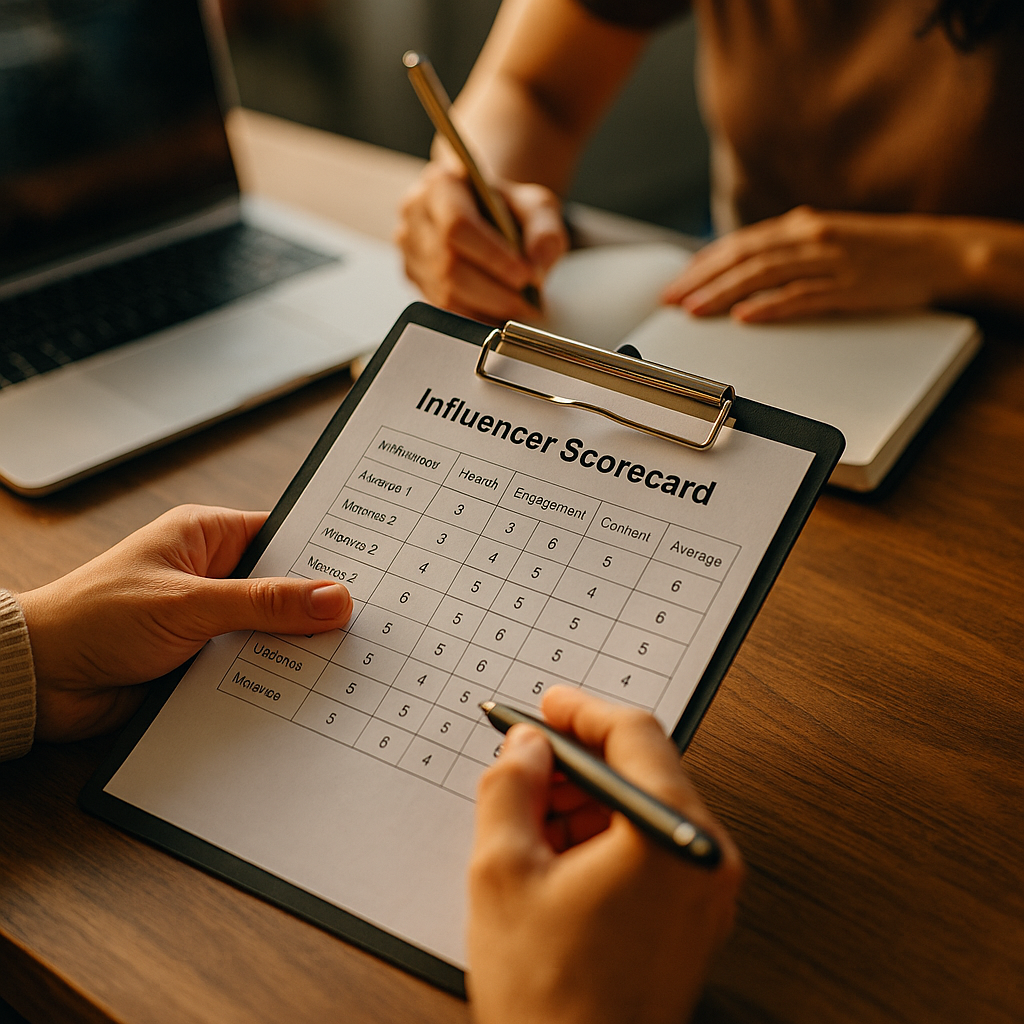Looking to build effective partnerships? Learning how to develop an influencer scorecard for evaluating potential partners is essential for modern brands. A strategic, data-driven approach ensures you don’t rely on guesswork. Discover practical steps and expert tips to help your brand consistently collaborate with the right influencers for maximum impact.
Understanding the Importance of Influencer Scorecards
In 2025, influencer marketing continues to be a lucrative strategy, but the landscape is more complex than ever. With authenticity and audience trust under the microscope, brands need robust tools to vet potential collaborators. An influencer scorecard is a comprehensive evaluation framework that assigns measurable criteria to each influencer, ensuring objective and repeatable assessments.
Scorecards standardize your selection process by allowing you to compare influencers based on diverse factors such as audience quality, engagement rate, values alignment, and campaign relevance. This not only reduces bias but also increases transparency when explaining partnership decisions to internal stakeholders.
Key Components to Include in Your Influencer Scorecard
When creating an influencer evaluation scorecard, it’s crucial to focus on both quantitative and qualitative measures. A well-structured scorecard covers more than just follower count. Here are essential criteria to include:
- Audience Demographics: Age, gender, location, and interests should align with your target customers.
- Engagement Rate: Track likes, comments, shares, and saves relative to follower count for consistency and authenticity.
- Content Quality: Assess imagery, video production, writing style, and creativity.
- Brand Alignment: Gauge how well the influencer’s values, messaging, and visual style match your brand identity.
- Campaign Experience: Evaluate past partnerships, sponsored content results, and professionalism.
- Audience Authenticity: Use tools to check for fake followers, bots, or suspicious activity.
- Reach and Platform Specialization: Consider the influencer’s reach on each relevant platform (Instagram, TikTok, YouTube, etc.) and their impact within specific niches.
Assign weightings based on your campaign goals—for example, if brand safety is paramount, brand alignment might carry more weight than total reach.
How to Gather and Validate Influencer Data
An influencer assessment tool is only as reliable as the data it uses. For trustworthy evaluations:
- Use Verified Analytics: Request access to the influencer’s media kit or analytics dashboard for accurate numbers on reach and engagement.
- Leverage Third-Party Platforms: Tools like AspireIQ, CreatorIQ, and HypeAuditor provide in-depth analysis of influencer profiles, including growth trends, fake follower detection, and engagement quality scores.
- Review Previous Brand Partnerships: Ask for case studies, campaign reports, or references from former collaborations to validate professionalism and reliability.
- Monitor Content in Real Time: Observe the influencer’s current posting activity and audience interaction for the past 30-60 days to identify any sudden changes or red flags.
Combining first-party data with independent verification strengthens your evaluation process and aligns with Google’s EEAT (Experience, Expertise, Authority, Trustworthiness) principles.
Building and Customizing Your Influencer Scorecard Template
With criteria and data sources set, you’re ready to construct your influencer partnership scorecard. Start with a spreadsheet or use influencer software with customizable scoring frameworks. Assign numerical values to each criterion and introduce weighted columns to reflect priorities.
- Input Influencer Details: Name, platform, niche, and contact information for easy tracking.
- Rate Each Criterion: Use consistent scales (e.g., 1-5 or percentage scores) for each component.
- Apply Weightings: Multiply each rating by its designated weight, tailored to campaign objectives.
- Calculate Total Score: Add weighted scores for an overall partnership rating.
- Benchmark and Rank: Compare results across all influencers to shortlist top candidates.
Maintain flexibility. If you run a short-term campaign targeting Gen Z, adjust your scoring model to prioritize engagement on TikTok or Snapchat, for example.
Interpreting Results and Making Partnership Decisions
Once your influencer evaluation system is in place, avoid treating the final score as the sole deciding factor. Consider contextual insights: Does the influencer have a unique creative voice? Have they shown responsiveness and professionalism in communication? Blend your quantitative analysis with qualitative judgment for optimal partnership choices.
Document your process for transparency, especially when justifying final decisions to leadership or clients. This approach bolsters trust and supports future campaign optimizations, closing the loop for continuous improvement.
Optimizing Your Influencer Evaluation Process Over Time
No scorecard should be static. The influencer marketing landscape evolves rapidly with changes in platform algorithms, audience habits, and content formats. Schedule quarterly reviews of your evaluation criteria and adjust for emerging best practices or shifting business goals.
- Collect Post-Campaign Insights: Compare predicted partner performance versus results to strengthen criteria accuracy.
- Solicit Feedback: Ask internal teams and influencer partners for input on the process, improving clarity and efficiency.
- Stay Updated: Watch industry reports and social platform updates to anticipate new influencer trends or risks.
Continuous optimization ensures your influencer scorecard remains relevant and effective, keeping your brand’s partnership strategy sharp and future-ready.
FAQs: Influencer Scorecard Best Practices in 2025
-
What is an influencer scorecard, and why is it important?
An influencer scorecard is an evaluation tool outlining specific criteria for measuring influencer suitability. It ensures partnerships are chosen based on objective, transparent data tailored to campaign needs, reducing personal bias and improving ROI.
-
How often should I update my influencer scorecard?
Best practice is to review scorecard criteria every quarter, or after significant campaign learnings, to reflect changes in market trends, target audience, or business objectives.
-
Which data points are most critical for influencer evaluation in 2025?
Audience authenticity, real engagement rates, alignment with brand values, and recent performance metrics are the most essential. Use both verified analytics and independent third-party reports for best results.
-
Can I use AI tools in my influencer evaluation process?
Yes. AI-powered platforms now streamline influencer vetting by analyzing large datasets, detecting fake engagement, and predicting campaign effectiveness based on historical trends.
Developing an influencer scorecard for evaluating potential partners empowers your brand to make consistent, confident collaboration decisions. By balancing data-driven objectivity with human insight, you ensure each partnership aligns with your values, engages the right audience, and delivers measurable results in 2025 and beyond.
